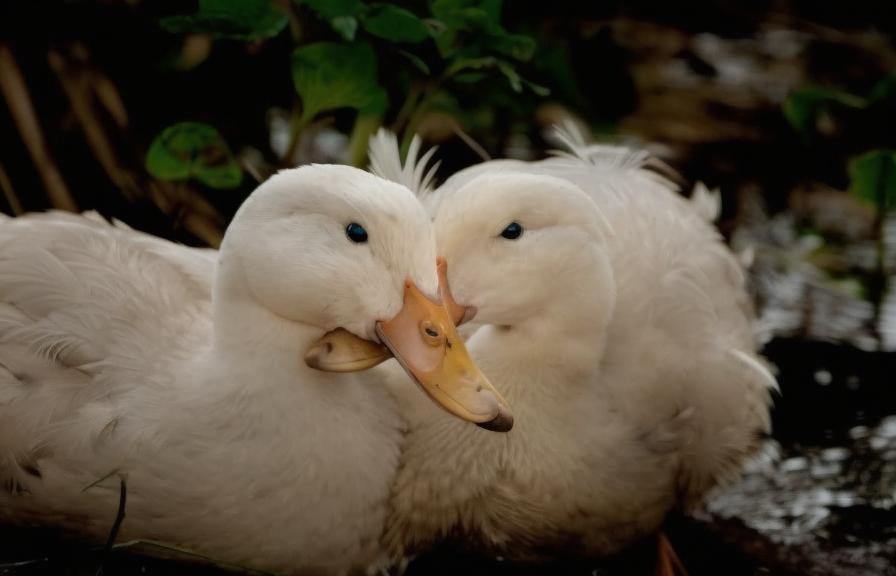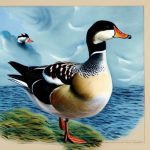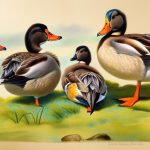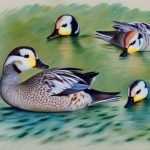Ducks are a diverse group of waterfowl that come in a wide variety of breeds, each with its own unique characteristics and traits. From the familiar Mallard to the lesser-known Silver Appleyard, duck breeds come in all shapes, sizes, and colors. These birds have been domesticated for thousands of years and have been bred for various purposes, including meat, eggs, and ornamental purposes. Understanding the different duck breeds and their characteristics is essential for anyone interested in raising ducks or simply appreciating the beauty and diversity of these fascinating birds.
Duck breeds can be categorized into different groups based on their primary use, such as meat, eggs, or ornamental purposes. Each breed has its own distinct physical and behavioral traits that make it well-suited for its intended purpose. Some breeds are known for their prolific egg-laying abilities, while others are prized for their flavorful meat. Additionally, some breeds are bred for their striking plumage and are popular among enthusiasts and collectors. Whether you’re interested in raising ducks for practical reasons or simply enjoy observing and learning about different bird species, understanding the various duck breeds is a fascinating and rewarding endeavor.
Key Takeaways
- There are many different duck breeds, each with their own unique characteristics and traits.
- Popular duck breeds like the Pekin and Mallard are known for their distinct physical and behavioral traits.
- Rare and unique duck breeds, such as the Cayuga and Silver Appleyard, are important to preserve for genetic diversity.
- Preserving duck breeds is important for maintaining biodiversity and ensuring the survival of these unique animals.
- Duck breeds play a crucial role in agriculture and conservation efforts, contributing to pest control and wetland preservation.
Popular Duck Breeds and Their Characteristics
1. Pekin Duck: The Pekin duck is one of the most popular duck breeds in the United States and is known for its large size, white plumage, and friendly disposition. Originally from China, Pekin ducks are primarily raised for their meat, which is prized for its tender texture and mild flavor. These ducks are also prolific egg layers, making them a popular choice for small-scale egg production. Pekin ducks are easy to care for and are known for their calm and sociable nature, making them a favorite among backyard duck enthusiasts.
2. Khaki Campbell: The Khaki Campbell is a British breed known for its exceptional egg-laying abilities, with hens laying up to 300 eggs per year. These ducks have a khaki-colored plumage and are prized for their efficiency in converting feed into eggs. Khaki Campbells are also known for their active and independent nature, making them excellent foragers. They are a popular choice for small-scale egg production and are valued for their high productivity and low maintenance requirements.
Rare and Unique Duck Breeds
1. Silver Appleyard: The Silver Appleyard is a rare breed of domestic duck known for its striking plumage and dual-purpose capabilities. Developed in England in the 1930s, the Silver Appleyard is prized for its beautiful silver and white feather pattern, as well as its excellent meat and egg production. These ducks are known for their friendly and docile nature, making them a popular choice for small farms and backyard enthusiasts. Despite their rarity, Silver Appleyards are gaining popularity among conservation-minded breeders who appreciate their unique combination of beauty and utility.
2. Cayuga: The Cayuga is an American breed of duck known for its iridescent green-black plumage that shimmers in the sunlight. This breed is named after Cayuga Lake in New York, where it was first developed in the mid-19th century. Cayugas are valued for their striking appearance as well as their excellent meat and egg production. These ducks are known for their calm and friendly disposition, making them a popular choice for small-scale farming and ornamental purposes. Despite their unique beauty and utility, Cayugas are considered a rare breed and are actively being preserved by dedicated breeders and conservationists.
The Importance of Preserving Duck Breeds
Preserving duck breeds is essential for maintaining genetic diversity within domestic duck populations and ensuring the long-term sustainability of these valuable birds. Many traditional duck breeds are at risk of extinction due to the increasing dominance of commercial hybrid strains and the loss of genetic diversity within domestic populations. By preserving rare and unique duck breeds, we can help safeguard valuable genetic traits that may be important for future breeding programs and conservation efforts.
In addition to genetic diversity, preserving duck breeds also helps to maintain cultural heritage and traditional farming practices. Many traditional duck breeds have been developed over centuries to thrive in specific environments and serve specific purposes, such as meat or egg production. By preserving these breeds, we can help ensure that traditional farming knowledge and practices are not lost to future generations. Furthermore, preserving rare duck breeds can also contribute to local economies by supporting small-scale farmers and breeders who specialize in raising these unique birds.
The Role of Duck Breeds in Agriculture and Conservation
Duck breeds play a crucial role in agriculture and conservation by providing valuable resources such as meat, eggs, feathers, and pest control services. Many traditional duck breeds have been developed for specific purposes, such as meat or egg production, and possess unique traits that make them well-suited for these roles. For example, some duck breeds are known for their prolific egg-laying abilities, while others are prized for their flavorful meat or excellent foraging skills.
In addition to their agricultural importance, duck breeds also play a vital role in conservation efforts by preserving genetic diversity within domestic populations and contributing to the overall biodiversity of waterfowl species. Many traditional duck breeds are at risk of extinction due to the increasing dominance of commercial hybrid strains, making it essential to actively preserve these valuable genetic resources. By maintaining diverse populations of domestic duck breeds, we can help ensure the long-term sustainability of these birds and contribute to broader conservation efforts aimed at protecting waterfowl species worldwide.
Differentiating Duck Breeds through Visual Characteristics

Duck breeds can be differentiated through a variety of visual characteristics, including size, shape, plumage coloration, bill shape, and leg coloration. These visual traits can provide valuable clues about a duck’s breed and its intended purpose, whether it be meat production, egg-laying, or ornamental purposes. By learning to recognize these visual characteristics, enthusiasts can gain a deeper appreciation for the diversity of duck breeds and better understand their unique traits and qualities.
For example, the Pekin duck is easily recognizable by its large size, white plumage, orange bill, and orange legs. In contrast, the Khaki Campbell has a smaller size, khaki-colored plumage, dark bill, and dark legs. Similarly, the Silver Appleyard is known for its striking silver and white feather pattern, while the Cayuga is distinguished by its iridescent green-black plumage. By paying attention to these visual characteristics, enthusiasts can develop a keen eye for identifying different duck breeds and appreciate the unique beauty of each breed.
Capturing the Beauty of Duck Breeds: Photographing and Sharing Images
Photographing duck breeds can be a rewarding way to capture their beauty and share their unique characteristics with others. Whether you’re an experienced photographer or simply enjoy taking snapshots of your feathered friends, capturing images of duck breeds can help raise awareness about the diversity of these birds and promote their conservation and preservation. By sharing your photos with others through social media, websites, or local exhibitions, you can help educate people about the importance of preserving rare and unique duck breeds.
When photographing duck breeds, it’s essential to capture their distinctive visual traits and behaviors that make each breed unique. Focus on capturing close-up shots of their plumage coloration, bill shape, leg coloration, and any other visual characteristics that distinguish one breed from another. Additionally, try to capture their natural behaviors such as swimming, foraging, or interacting with other ducks to showcase their individual personalities and traits. By sharing these images with others, you can help promote appreciation for the beauty and diversity of duck breeds while raising awareness about the importance of preserving these valuable genetic resources.
In conclusion, duck breeds are a diverse group of waterfowl that come in a wide variety of breeds with unique characteristics and traits. From popular breeds like the Pekin Duck to rare breeds like the Silver Appleyard and Cayuga, each breed has its own distinct physical and behavioral traits that make it well-suited for its intended purpose. Preserving duck breeds is essential for maintaining genetic diversity within domestic populations and ensuring the long-term sustainability of these valuable birds. Duck breeds play a crucial role in agriculture by providing valuable resources such as meat, eggs, feathers, and pest control services while also contributing to conservation efforts by preserving genetic diversity within domestic populations. By learning to recognize visual characteristics and capturing the beauty of duck breeds through photography, enthusiasts can gain a deeper appreciation for the diversity of these birds while promoting their conservation and preservation.
If you’re fascinated by duck breeds, you’ll love our related article on poultrywizard.com that discusses the importance of the right chicken coop door size. Ensuring that your coop has the appropriate door size is crucial for the comfort and safety of your ducks and other poultry. Check out the article here to learn more about this essential aspect of poultry care.
FAQs
What are duck breeds?
Duck breeds refer to the different varieties of ducks that have been selectively bred for specific traits such as size, color, and purpose.
How many duck breeds are there?
There are over 120 different duck breeds recognized worldwide, each with its own unique characteristics and traits.
What are some popular duck breeds?
Some popular duck breeds include the Pekin, Mallard, Rouen, Khaki Campbell, and Indian Runner. Each breed has its own distinct appearance and purpose.
What are the differences between duck breeds?
Duck breeds can vary in size, color, plumage patterns, and purpose. Some breeds are raised for meat production, while others are prized for their egg-laying abilities or ornamental qualities.
Where can I find images of duck breeds?
You can find images of duck breeds online through various websites, including poultry breed directories, duck breeders’ websites, and agricultural resources. Additionally, books and magazines about poultry and waterfowl often feature images of different duck breeds.
Meet Walter, the feathered-friend fanatic of Florida! Nestled in the sunshine state, Walter struts through life with his feathered companions, clucking his way to happiness. With a coop that’s fancier than a five-star hotel, he’s the Don Juan of the chicken world. When he’s not teaching his hens to do the cha-cha, you’ll find him in a heated debate with his prized rooster, Sir Clucks-a-Lot. Walter’s poultry passion is no yolk; he’s the sunny-side-up guy you never knew you needed in your flock of friends!







